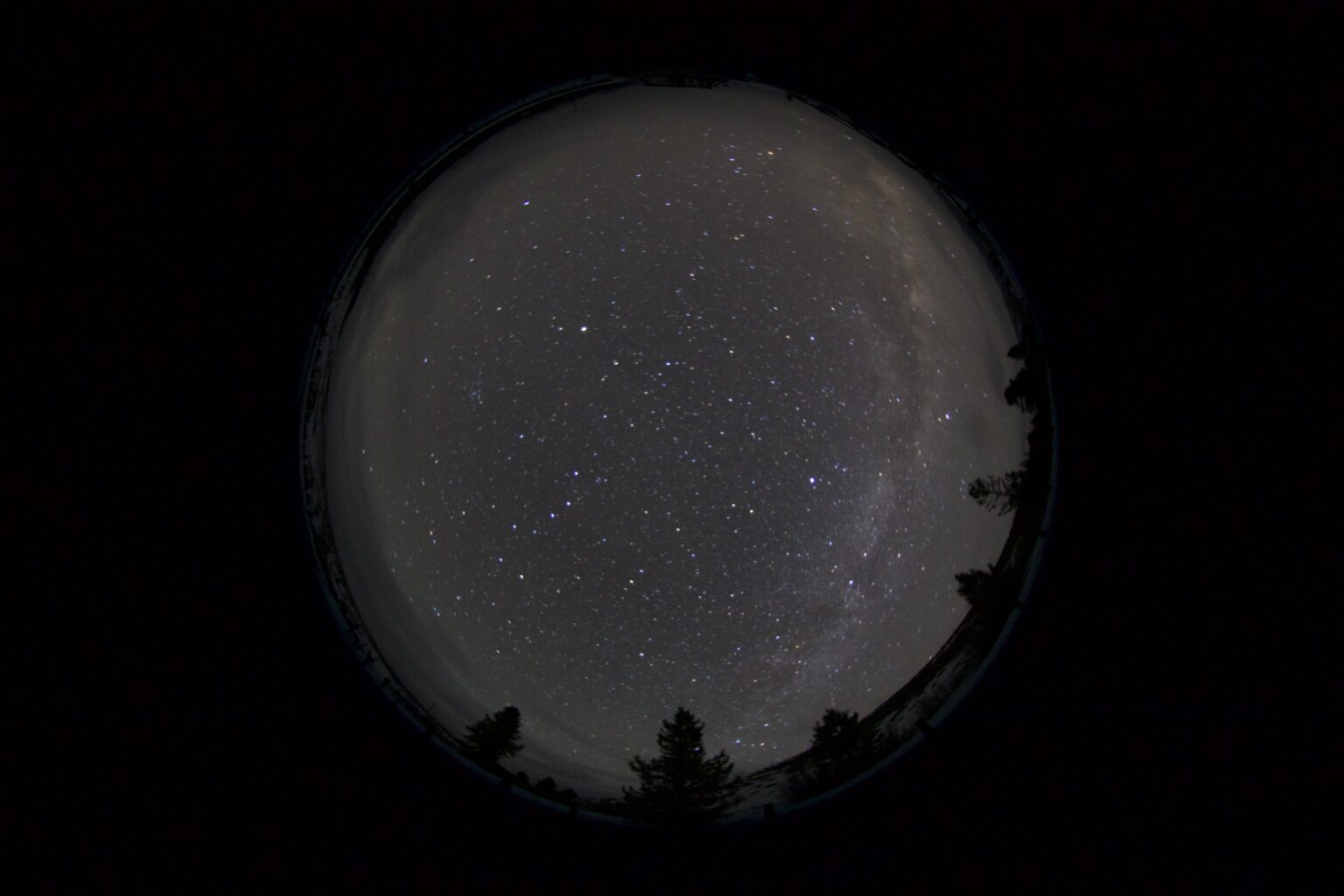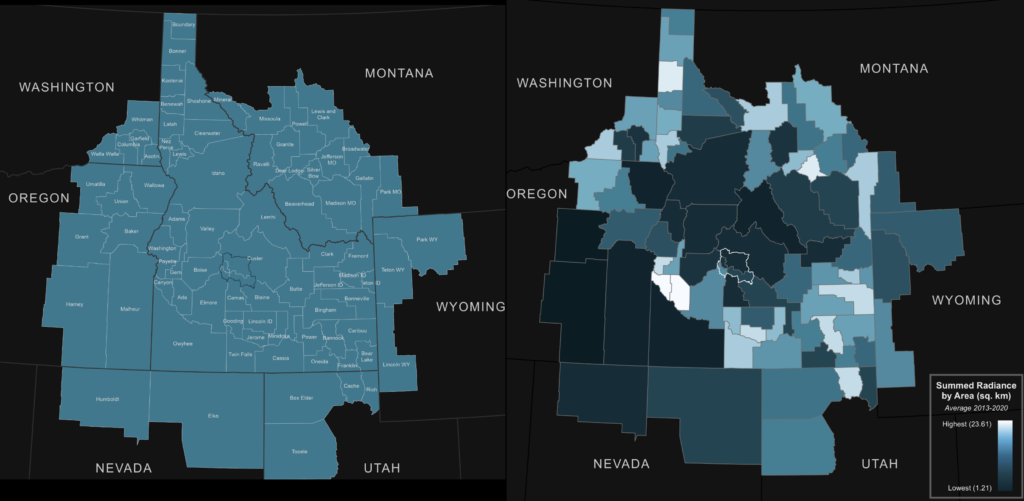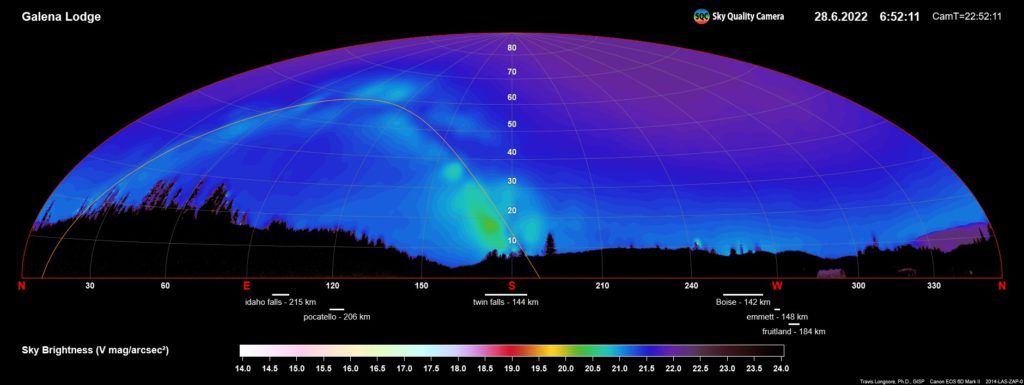
The dramatic growth of the Treasure Valley impacts more than just commute times. The glare from our shining cities also obscures the night sky. And, like other forms of pollution, light pollution respects no municipal boundaries. Treasure Valley’s bright lights and big cities are starting to affect the night skies in the nearby Central Idaho Dark Reserve (CIDSR). Here are some of the details of our local light pollution and ways we can help mitigate its effects.
Much of the information here comes from this report written by the students from the UCLA Institute of the Environment and Sustainability.

What exactly is light pollution? Light pollution is the scattering of artificial light by the Earth’s atmosphere. When lights on the ground are very bright at night, that light can bounce around in the atmosphere and eventually be reflected back toward the ground. You actually see the same physical effect during the day when the sky is clear and sunny. Blue light is especially prone to bouncing (red light less so), and so blue light from the Sun rattles around in the atmosphere many times before finally streaming into your eyeball. That’s why the sky is blue.
What effects does light pollution have? Artificial lighting at night, of course, can help make cities safer, but they also have a wide range of negative impacts. The International Dark-Sky Association (IDA) reports that artificial light at night can impact animal spatial orientation, causing animals to become lost and increasing human-animal contact. Artificial light can also perturb the seasonal cycles of plants, reducing crop yields. And, of course, artificial light disrupts human circadian rhythms, increasing biological stressors and possibly contributing to health problems.
How do we monitor light pollution? Local light pollution can be monitored using sky quality cameras, cameras specially designed to take fish-eye photos of the night sky – the photo above is an example image taken from Galena Lodge within the CIDSR. Satellite images can also help quantify the amount of light pollution across the Earth. In particular, the Visible Infrared Imaging Radiometer Suite (VIIRS) instrument onboard the joint NASA-NOAA Suomi National Polar-Orbiting Partnership spacecraft collects images of Earth’s surface, about 3,000 kilometers across. (You can explore the light pollution data from VIIRS here.)
How bright are the skies in Treasure Valley? The map at left shows the brightness of night lights by county in the region surrounding the CIDSR. Ada and Canyon county (home to Boise, Meridian, Nampa, and Caldwell) show up as white polygons near the map center. The CIDSR is outlined near the center of the map in white. The color scale shows that Ada and Canyon are almost 20 times as bright as Custer county (the county along the northeast border of the CIDSR).
What astronomical objects can we not see because of light pollution? The night skies in downtown Boise, of course, are quite bright, and astronomers rate the light pollution in a sky using the Bortle Scale. For example, a sky that is Bortle Class 1 is as dark a sky as you can get. In principle, the zodiacal light is visible, and the Milky Way casts obvious shadows. The most light polluted skies, those of large cities, fall into Class 9, where the only objects to observe are the Moon, the planets, bright satellites, and a few of the brightest star clusters. Boise’s downtown is about Class 7. The Milky Way is marginally visible, and the sky is bright and discolored near the horizon.

How is light pollution affecting the CIDSR? Glare from the Treasure Valley has become distinctly visible from the Reserve, appearing as a bright patch along the southwestern horizon. The image below shows the night sky from Galena Lodge. Fortunately, Treasure Valley’s impact is still relatively small, but it is growing.
What can I do to help, and where can I learn more? The International Dark Skies Association provides a detailed advisory page with links to outdoor light fixtures that reduce light pollution and descriptions of municipal advocacy efforts you can pursue.
On Friday, Feb 3 at 7:30p MT, join Boise State Physics for our First Friday Astronomy event when we will host a panel discussion and viewing of the documentary “Saving the Dark”about light pollution. The event will be presented in-person on campus (room 112 in the Education Building) and via live-stream – http://boi.st/astrobroncoslive.